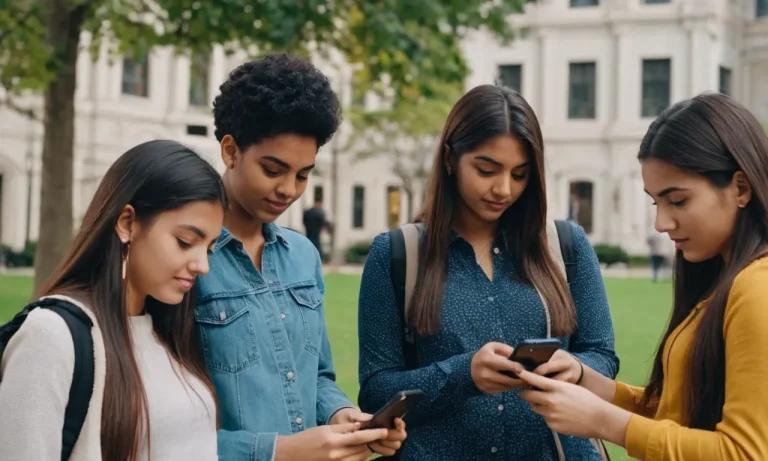In the realm of education, school uniforms have long been a subject of debate, with opinions ranging from staunch support to vehement opposition. When it comes to Japan, the land of tradition and modernity intertwined, the question of whether all schools mandate uniforms takes on a unique significance.
If you’re short on time, here’s a quick answer to your question: No, not all Japanese schools require students to wear uniforms. While the majority of public and private schools in Japan have a uniform policy, there are exceptions, particularly in some international schools and alternative educational institutions.
In this comprehensive article, we will delve into the intricacies of school uniforms in Japan, exploring their historical roots, cultural significance, and the current landscape. We will examine the reasons behind the widespread adoption of uniforms, as well as the exceptions and alternatives that exist.
Additionally, we will shed light on the ongoing debates surrounding this topic and provide insights into the potential future of school uniforms in Japan.
The Tradition of School Uniforms in Japan
Historical Origins
The practice of wearing school uniforms in Japan has its roots dating back to the late 19th century, when the country was undergoing rapid modernization and westernization. Inspired by the Western education system, Japanese schools adopted uniforms as a way to promote a sense of unity and discipline among students.
The first recorded instance of school uniforms in Japan was in 1879 at the Gakushuin School, a prestigious institution founded by the imperial family.
Cultural Significance
Over time, school uniforms have become an integral part of Japanese culture, symbolizing values such as conformity, respect for authority, and a sense of belonging. They are seen as a way to foster a sense of community and equality among students, regardless of their socioeconomic backgrounds.
In Japan, school uniforms are not just a practical garment but also a source of pride and identity for students and their schools. Many Japanese people fondly remember their school uniforms and associate them with cherished memories of their youth.
Promoting Discipline and Unity
The primary purpose of school uniforms in Japan is to promote discipline and unity among students. By wearing the same attire, students are encouraged to focus on their studies and extracurricular activities rather than on fashion or social status.
According to a survey by the Ministry of Education, Culture, Sports, Science and Technology (MEXT), over 98% of public schools in Japan require students to wear uniforms. Uniforms also help to create a sense of belonging and camaraderie among students, fostering a strong school spirit and a sense of community.
Additionally, many believe that uniforms can help reduce bullying and discrimination based on appearance or socioeconomic status.
While the tradition of school uniforms in Japan is deeply rooted, there have been some discussions and debates around the topic in recent years. Some argue that uniforms can stifle individuality and creativity, while others believe that they are an essential part of Japanese culture and education.
Nevertheless, school uniforms remain a ubiquitous sight in Japan, and their significance extends beyond mere attire, reflecting the country’s values and traditions. For more information on school uniforms in Japan, you can visit the MEXT website at https://www.mext.go.jp/.
The Prevalence of School Uniforms in Japan
School uniforms hold a deep-rooted tradition in Japan’s educational system. They are not just a dress code but a symbol of discipline, unity, and identity. Whether you’re strolling through the bustling streets of Tokyo or exploring the serene countryside, the sight of students donning their distinctive uniforms is a familiar and quintessential part of the Japanese landscape.
But the question remains: Do all Japanese schools require uniforms? Let’s delve into this intriguing topic and uncover the nuances behind this widespread practice.
Public Schools
The vast majority of public schools in Japan, from elementary to high school levels, mandate the wearing of uniforms. This long-standing tradition dates back to the Meiji era (1868-1912) when Western-style education was introduced, and uniforms were adopted to promote a sense of equality and discipline among students.
According to a report by the Ministry of Education, Culture, Sports, Science and Technology (MEXT), approximately 98% of public elementary, junior high, and high schools in Japan require uniforms. This figure highlights the deep-rooted cultural significance and widespread acceptance of school uniforms in the country.
Private Schools
While public schools follow a more standardized approach, private schools in Japan often have more flexibility when it comes to uniforms. Some prestigious private schools may opt for more elaborate or distinctive uniforms to establish a unique identity and prestige.
Others may allow students to wear casual clothing or implement a dress code instead of a traditional uniform. However, it’s worth noting that a significant majority of private schools, approximately 90%, still require uniforms, according to a survey conducted by the Japan Private School Association.
Exceptions and Alternatives
While school uniforms are deeply ingrained in Japanese culture, there are exceptions and alternatives to this practice. Some schools, particularly those catering to students with special needs or alternative educational philosophies, may forgo uniforms altogether.
Additionally, some schools have adopted more relaxed policies, allowing students to wear casual clothing on designated days or during certain school events.
An emerging trend in recent years has been the introduction of gender-neutral uniforms in some progressive schools. This move aims to promote inclusivity and accommodate students who identify as non-binary or transgender.
For instance, the Osaka Prefectural Kawachi-Nagano High School made headlines in 2019 when it became one of the first public high schools in Japan to introduce a gender-neutral uniform option.
The Ongoing Debate: Pros and Cons of School Uniforms
Arguments in Favor of Uniforms
Advocates of school uniforms argue that they promote a sense of unity, discipline, and professionalism within the educational environment. According to a study by the National Center for Education Statistics, 57% of public schools with uniforms reported improved student behavior, and 70% reported a better school climate after implementing uniform policies.
Uniforms can also help reduce socioeconomic disparities among students, preventing potential bullying or discrimination based on clothing choices.
Additionally, uniforms can save time and money for families, eliminating the need to constantly purchase trendy and often expensive clothing. A 2017 survey by the National Retail Federation estimated that parents spend an average of $285 per child on back-to-school clothing and accessories.
Uniforms can significantly reduce this financial burden. 😊
Arguments Against Uniforms
Critics argue that school uniforms stifle individual expression and creativity, which are essential for personal growth and development. Some parents and students feel that uniforms infringe on their freedom of choice and self-expression.
Opponents also argue that uniforms can be costly, especially for low-income families who may struggle to afford multiple sets.
There are also concerns that uniforms do not necessarily address the root causes of disciplinary issues or academic underperformance. A 2019 study by the University of North Carolina found no significant impact on student achievement or behavior when comparing schools with and without uniform policies.
The study suggests that other factors, such as teaching quality and school climate, may play a more significant role.
Balancing Tradition and Individual Expression
In Japan, where school uniforms are deeply rooted in tradition and cultural values, the debate continues. While some schools have relaxed their uniform policies to allow more personal expression, others remain steadfast in upholding long-standing traditions.
Finding a balance between preserving cultural heritage and accommodating individual preferences is an ongoing challenge.
Ultimately, the decision to implement or maintain school uniform policies should involve input from all stakeholders, including parents, students, educators, and policymakers. Open dialogue and a willingness to consider multiple perspectives are crucial in navigating this complex issue. As societal norms and values evolve, schools may need to adapt their policies to meet the changing needs of their communities while still promoting a positive and inclusive learning environment for all students.
The Future of School Uniforms in Japan
Evolving Societal Attitudes
The traditional concept of school uniforms in Japan is facing a gradual shift as societal attitudes evolve. According to a survey by the Ministry of Education, Culture, Sports, Science, and Technology (MEXT), around 15% of public schools in Japan have adopted a more relaxed dress code or abolished uniforms entirely.
This change reflects a growing emphasis on individual expression and inclusivity within the education system.
Proponents of this shift argue that uniforms can stifle creativity and self-identity, particularly during the formative years of adolescence. They believe that allowing students to express themselves through their clothing choices can foster a more positive learning environment and promote personal growth.
Additionally, some parents and educators have raised concerns about the financial burden associated with purchasing uniforms, especially for low-income families.
Potential Policy Changes
In response to these evolving attitudes, the Japanese government has begun exploring potential policy changes regarding school uniforms. A proposal by MEXT in 2021 suggested giving individual schools more autonomy to decide on their dress code policies, taking into account factors such as regional climate, cultural diversity, and student preferences.
However, the proposal also emphasizes the importance of maintaining a certain level of uniformity and discipline within the school environment. It suggests that schools could adopt a more flexible dress code while still requiring students to adhere to basic guidelines, such as appropriate attire and grooming standards.
Embracing Diversity and Inclusivity
As Japan continues to embrace diversity and inclusivity, the role of school uniforms is being re-evaluated. Some educators and policymakers argue that uniforms can create a sense of unity and belonging, but they should also accommodate diverse cultural and religious backgrounds.
For example, some schools have started allowing students to wear hijabs, turbans, or other religious attire alongside their uniforms.
Furthermore, there is a growing recognition of the need to accommodate students who identify as non-binary or transgender. Some schools have begun offering gender-neutral uniform options or allowing students to choose the uniform that aligns with their gender identity.
This move towards inclusivity aims to create a more supportive and welcoming environment for all students, regardless of their gender expression or sexual orientation.
According to a recent survey by the Japan Teachers’ Union, around 68% of teachers support updating school uniform policies to better reflect societal changes and promote inclusivity. While the debate surrounding school uniforms in Japan is ongoing, it is clear that the country is grappling with the need to balance tradition with evolving social norms and the diverse needs of its student population.
Conclusion
The question of whether all Japanese schools have uniforms is a complex one, with no simple yes or no answer. While the majority of public and private schools in Japan adhere to the long-standing tradition of requiring students to wear uniforms, there are exceptions and alternatives that cater to different educational philosophies and cultural backgrounds.
As Japan continues to navigate the delicate balance between preserving its rich cultural heritage and embracing modernity, the debate surrounding school uniforms is likely to persist. Proponents argue that uniforms promote discipline, unity, and a sense of belonging, while opponents advocate for individual expression and personal freedom.
Ultimately, the future of school uniforms in Japan will be shaped by evolving societal attitudes, potential policy changes, and a growing emphasis on diversity and inclusivity. As the nation continues to evolve, it will be fascinating to observe how this age-old tradition adapts to the changing times, while still honoring its cultural roots.






